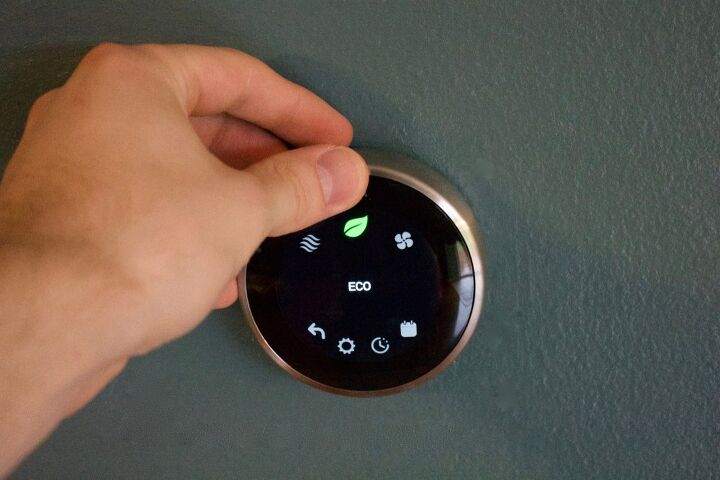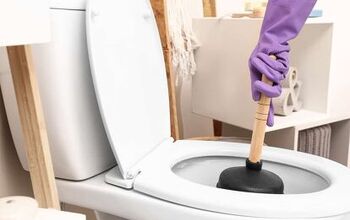Nest Displaying "No Power To Rc Wire" Error? (Possible Causes & Fixes)

Nest has several error codes that may appear on the screen to let you know something is amiss. While it can be alarming, there are usually plenty of ways to troubleshoot the problems yourself.
You may be prompted to look at the screen if your Nest starts acting up for unknown reasons. If you receive an E73 error message on your Nest, it means there’s no power to the Rc wire.
The “No power to Rc wire” message is commonly due to incorrect or loose wiring. Before checking the wiring, first, make sure the HVAC breaker hasn’t tripped. Other reasons for the message include a clogged air filter or excess water build-up in your AC drip pan. Finally, the fuse on your furnace may have blown.
Do You Need Electricial Wiring or Panel Upgrade Services?
Get free, zero-commitment quotes from pro contractors near you.

What is the Rc Wire?
You may have noticed a lot of power issues associated with your Nest after receiving this E73 message. It’s partially correct to assume, then, that the Rc wire gives power to the thermostat. It could be a bit more complicated than that, though.
You could have either an Rc or an Rh wire. Regardless of which one you have, if there’s only one, it powers the entire HVAC system—heat as well as air.
But your Nest has two terminals: Rh and Rc. So where do you put the wire? If you only have one R wire, you can put it in either terminal. Nest has both of these terminals because of how some HVAC systems are designed.
Some HVAC systems, known as dual transfer systems, use separate power for heating and cooling. In this case, you’ll have both an Rh and an Rc wire. The Rh wire powers the heat and the Rc wire powers the air.
Note: If you have a dual transfer system, Google recommends contacting a professional to install or troubleshoot your Nest. A professional can navigate the complicated system to avoid damage.
C Wire
It’s important to note that, while the R wire powers your HVAC unit, Nest is powered by the unit while it’s running. So, the R wire indirectly powers the Nest. When the system isn’t running, Nest relies on its battery. In order to give the battery 24/7 power, a C wire is required.
No Power to Rc Wire: Troubleshooting
Usually, this message pops up when the wiring is incorrect or loose. Other reasons for this message include the following:
- Tripped breaker
- Clogged air filter
- Excess water build-up in the drip pan
- A blown fuse on the furnace
You can check for most of these things yourself. However, if you feel at all unsure, don’t hesitate to seek out the help of a professional.
Tripped Breaker
The most obvious reason your system isn’t receiving power is that the power is off! Even if the power to your HVAC system is off, Nest may still work intermittently because of its internal battery. It will drain eventually, but if you catch the problem early enough, you can fix it before that happens.
The first place to look is your breaker panel or fuse box. You may have a single switch or two separate switches—one for heating and one for cooling. Make sure both are in the “On” position.
In some homes, the power for the HVAC system is actually located right next to it. It may look like a light switch. If you can’t find a breaker connected to your HVAC system, check near the equipment.
If the breaker was tripped, flip it back on and see if power has returned to your Nest.
Check Thermostat Wiring
Before checking the wiring on your thermostat, it is most important that you turn off the power to your HVAC system at the breaker. Exposed wires with active currents are a recipe for disaster. Keep yourself safe.
- Detach the thermostat from the wall and make sure all the wires are in their correct terminals.
- Disconnect only the Rc wire and examine it. It should have a least 1mm of copper exposed, and the copper shouldn’t be bent. The wire should also be free of corrosion or paint.
- Test the Rc wiring using a voltmeter. A 24 VAC reading is normal and means the wiring is functioning properly. (If this is the case, the problem is with the AC unit.)
- Reinsert the wire into the terminal. Make sure the connector button is pressed firmly down.
- At this time, you can test the voltage of the other wires just in case.
- Turn your breaker back on to restore power to your HVAC system.
- Replace the Nest back on the wall and wait for it to fully power up.
If this doesn’t resolve the problem, look beyond your thermostat to your HVAC unit.
Clogged Air Filter
If your air filter is clogged, the HVAC system can’t maintain proper airflow. When the air is limited enough, the system can freeze and shut down. Check your air filter with the following steps:
- Locate the air filter on your system. Typically, it’s found behind a grate either on the wall or the ceiling. It could also be located inside the furnace, in which case, you’ll have to turn off the breaker before removing it.
- Replace the filter if you notice it’s clogged or dirty. Changing the air filter every 3 months prevents it from clogging.
- If the cooler coils are frozen, allow them to thaw completely before using the AC again. This can take up to 24 hours.
Excess Water Build-Up
As your AC runs, condensation forms, and the drip pan catches it. Sometimes, if your AC runs a lot, the drip pan becomes full. The system shuts down at this point to prevent overflow. When the system shuts down, it stops sending power to your thermostat.
A full drip pan is the most common reason the AC won’t turn on. Take the following steps to empty the pan:
- Shut off the power to your HVAC system at the breaker.
- Locate the drip pan. It’s usually found beneath the cooling coils which, in turn, are usually on the top or bottom of the furnace or air handler. Note: If the coils are located behind a sealed panel, do not remove the panel yourself.
- Empty the drip pan using a wet/dry shop vac.
- Clean any mold or mildew that built up on the pan.
- If you notice a clog in the drainpipe, pour ¼-cup of distilled vinegar into the pipe and let it sit for at least 30 minutes. This will help break down the clog. Then, flush the pipe with water.
Blown Furnace Fuse
An AC unit that has to work extra hard may result in a blown fuse. A blown fuse results in no power to the HVAC system which means no power to the thermostat. Follow these steps to check for a blown fuse:
- Turn off the breaker to cut power to the HVAC system.
- Locate the HVAC fuse on the control panel. Check your owner’s manual if you’re unsure.
- Replace the fuse if you notice it’s burnt or discolored.
- After replacing it, firmly reattach any panels you initially removed.
- Turn the HVAC breaker back on.
If you feel at all unsure about replacing a damaged fuse, contact an HVAC specialist for assistance.
Still Not Working?
The above solutions are usually enough to fix the E73 error message. If Nest still isn’t working properly after following these steps, it’s time to contact Google Nest Customer Support. Explain all the measures you’ve taken thus far.
Related Questions
Is an Rc wire the same as a C wire?
No. In the case of only one R cable, the Rc wire powers the heating and cooling system. If you have an Rh and an Rc wire, the Rc wire powers the air conditioner. The C wire provides power to the thermostat.Nest maintains that you don’t need a C wire for the thermostat to run. This is true. But you need a C wire for the thermostat to run properly. Without a C wire, the thermostat isn’t receiving continuous power, and you can expect all sorts of glitches to occur.
What happens if Nest thermostat loses power?
Because of its internal battery, Nest will run for a time during a power outage. It relies on the charge that was created while the power was running. The battery usually lasts an additional 1-2 hours. Once the battery drains, the Nest loses power as well. All of your programs should be maintained when the power returns.
Do You Need Electricial Wiring or Panel Upgrade Services?
Get free, zero-commitment quotes from pro contractors near you.

Summing It Up
An E73 error means there’s no power going to your Nest’s Rc wire. This can affect the function of your air conditioner, the Nest’s power, or both.
The most common reason to receive an E73 message is due to improper or loose wiring. To avoid this issue, it might be best to have a professional install your Nest in the first place.
If the wiring isn’t to blame, the problem lies with your air conditioner. It could be a clogged air filter, full drip pan, or blown fuse. Don’t be afraid to contact a professional if you have any concerns.

Brigid Levi is a wife, mother, and freelance writer who enjoys a good DIY project and creating beautiful spaces within her home. From cleaning and organization hacks to home decor ideas, she loves helping people in their quest to turn a house into a home. Her hobbies include pretending to be Joanna Gaines while updating her home with her husband and performing in local theater productions.
More by Brigid Levi












![The 5 Best Angle Grinders – [2022 Reviews & Buyer's Guide]](https://cdn-fastly.upgradedhome.com/media/2023/07/31/9071326/the-5-best-angle-grinders-2022-reviews-buyer-s-guide.jpg?size=350x220)

![Finishing Basement Without Permit [Is It Really Illegal?]](https://cdn-fastly.upgradedhome.com/media/2023/07/31/9070078/finishing-basement-without-permit-is-it-really-illegal.jpg?size=350x220)












